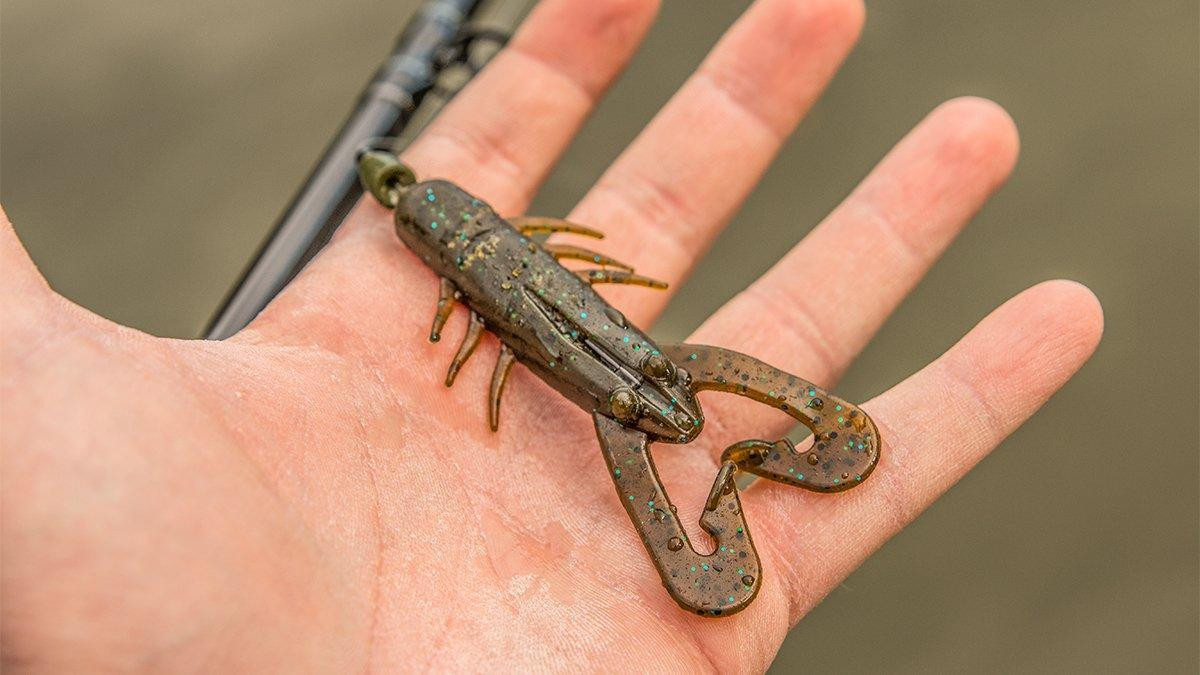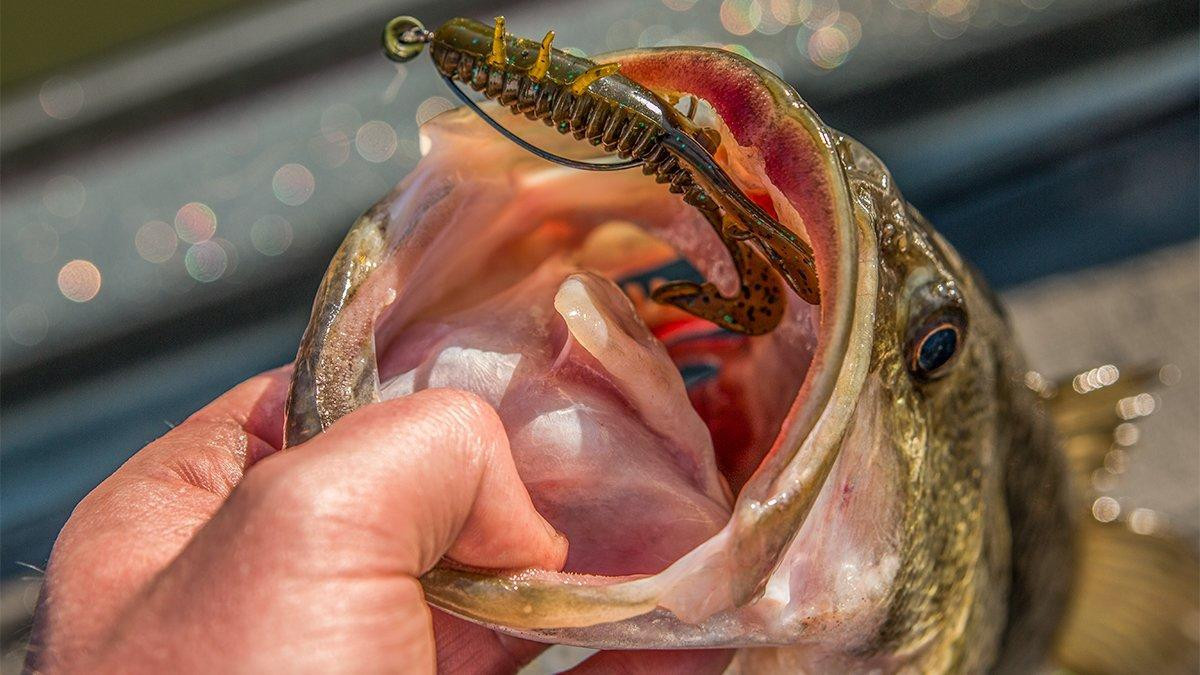The bass fishing industry is inundated with soft plastics and to be quite honest, they’re not the sexiest thing in the world to read (or write) about. After testing the Gene Larew Hammer Craw for the last few months, however, I can comfortably say that I’ve added another bait to my permanent arsenal.
I’ve tinkered with this bait a lot and it’s quite obvious that a lot of thought went into its design. There are a lot of small details that make this an attractive option for anyone who regularly fishes soft plastics. In the next few slides, I’ll outline exactly what I’m talking about.
Not too big, but not too small
A lot of the soft plastics I’ve tested aren’t as versatile as I’d like; I mainly attribute that to their size. The Gene Larew Hammer Craw is 3 1/2 inches long, which allows me to fish it in several different ways.
It pairs wonderfully with both a 3/0 and 4/0 Offset EWG hook, which gives me the option to finesse or power fish based on the current conditions. If I’m looking for a more subtle approach, I’m able to rig it on a light-wire 3/0 hook and a 1/8-ounce tungsten. I’ll opt for this approach when the conditions are a bit tougher on glass-smooth, bluebird days. I can pitch it to sparse cover and scattered shoreline vegetation and get some of those post-frontal bass to commit.
When I’m targeting the really thick stuff, such as heavy laydowns and thicker vegetation, I can bump up my hook size to a heavy-wire 4/0 hook and rig it with a 3/16 or 3/8-ounce tungsten. This allows me to make short pitches and aggressive hooksets without worrying about bending my hook.
If you’re a dock skipper, you’ll love it
You’ll notice that the body of the Hammer Craw isn’t round like many other baits. Instead, it’s very flat which allows it to skip like a river rock either on a Texas rig or on the back of your favorite jig. The added surface area makes it a great option if you like to skip a lot of boat docks throughout the year.
In addition to the body shape, the lack of crazy appendages also helps it skip well. There’s not a bunch of legs, arms and flanges hanging off of the bait, which helps it glide across the water’s surface without breaking surface tension.
The legs kick a lot
The Hammer Craw’s legs kick aggressively with even the slightest twitch of your rod tip, but they’re still small and subtle enough to avoid overpowering the fish and inhibiting your skip casts. The foot pads provide enough of a flange for an enticing action, but they don’t seem to spook those wary bass on tough days.
In my opinion, this action makes it an outstanding option for various techniques. You can rig it on both traditional and bladed swim jigs, football jigs, flipping jigs and even buzzbaits.
It lasts for quite a few fish
I’m averaging anywhere from 4 to 6 bass on each bait. It stays on the hook well and doesn’t slide down the hook shank very often. I was a little concerned about its durability at first due to its slim body, but I’m quite impressed now that I’ve fished with it. The appendages also stay intact, even when the bass are short-striking your favorite jig.
Great color selection
The color options make it obvious that the Hammer Craw was designed to be a versatile bait. Aside from the traditional pitching and flipping colors, you’ll find color schemes that can work for a wide array of lakes and techniques. I’m a big fan of Threadfin Shad, Green Pumpkin Plum and Black Blue Silver.
Available at Tackle Warehouse
This bait is going to catch a lot of bass for folks this year. If you’re trying to downsize your soft plastic collection and stick with more versatile baits that can work in different situations, I’d certainly recommend giving the Hammer Craw a long look. You’ll see me filming with it throughout the year.
The Gene Larew Hammer Craw is available at TackleWarehouse.com.
















